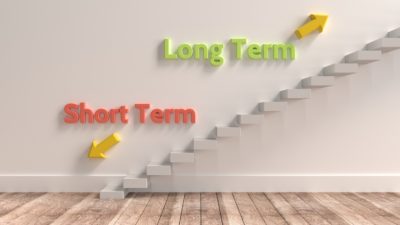
SSE (LSE: SSE) (NASDAQOTH: SSEZY.US) this morning announced an average 8.2% hike to household energy tariffs just a few weeks after Ed Milliband promised to freeze energy tariffs if Labour came into power, and only days after fellow energy transmission firm National Grid warned that the UK was facing the highest risk of blackouts in five years.
SSE recognises the danger of implementing this tariff increase in the current atmosphere — the company apologised to customers several times and pointed struggling households towards SSE’s customer service group to try to work out a plan — and made sure to highlight the tough situation it is in.
Stuck between supply and a hard place
The company faces rising costs to procure the energy it delivers to UK households as well as taxes meant to stimulate the development of clean energy.
Energy is getting more expensive for several reasons. Declining production in the North Sea increases the UK’s demand for imported natural gas, and the government’s policy of shutting down older, highly polluting coal plants is reducing electricity-generating capacity from a relatively cheap source, while more expensive green energy hasn’t been developed rapidly enough to fill the gap.
In this situation, what is a company that has promised to raise its dividend faster than inflation over the next several years to do? Raising prices is one of the answers.
Not much leeway
As one of the ‘Big Six’ utilities, SSE enjoys a privileged economic position. There is little competition because of the heavy investment that would be needed to create and maintain an alternative set of power lines and gas pipelines.
Because of this — as well as the necessary nature of its business — the utility industry is heavily regulated and pricing is carefully watched by regulators. And politicians as well.
While an announcement that the average household energy costs would rise by £2 per week won’t win SSE any fans (except perhaps from investors), it is important to consider what that means for the company.
SSE serves roughly 9.5 million residential customers — a number that declined slightly as of the first-quarter trading update — and reported total revenue of £28 billion, £8.6 billion of which came from supplying homes with gas and electricity (which they call Retail). I estimate this tariff hike will boost Retail revenue by just under £1 billion, or 11%.
However, as discussed above, revenue is offset by the cost of procuring the energy delivered. Last year’s £8.6 billion in Retail revenue resulted in operating profit of £364 million for a margin of 4%. The company hopes to achieve net income equal to 5% of revenue in the medium term.
So why invest?
So why do investors like utilities? Well, because of the relatively predictable nature of the business — generally steady or rising demand for its products and services as well as fairly clear visibility of future revenue — lenders are willing to provide plenty of debt to utility companies. SSE has £6 billion in debt on its balance sheet and a debt to equity ratio of 110% — for every pound of shareholder equity, there is £1.10 in debt.
This allows SSE and its peers to invest in upgrading and maintaining the country’s power supply and transmission systems without having to rely solely on shareholder money — referred to as leverage. This leveraging allows utilities to provide shareholders with much stronger returns than the company’s net margin would indicate.
And they share those returns via chunky dividends. SSE currently offers a dividend yield of roughly 6%, while National Grid isn’t too far behind with a yield of 5.7%.
Do what it takes
If SSE is to keep its promise to increase the dividend faster than inflation, it needs to increase income. This can mean expanding operations — not particularly easy as most people in the UK have someone providing them energy already, and international expansion is tricky — or they can increase revenue by raising tariffs, which is what SSE has done today.
SSE recognises that raising tariffs could spark the ire of customers and politicians, and so has struck an apologetic tone in its announcement — as well as putting the blame for some of the cost increases squarely on the government.
Politicians are known for supplying plenty of hot air, but their actions can have negative impacts on highly regulated companies like utilities — and in the long run, the economic development of a country. Investors should be aware of what this tariff hike could mean for SSE and its ability to maintain its generous dividend in the years to come…






